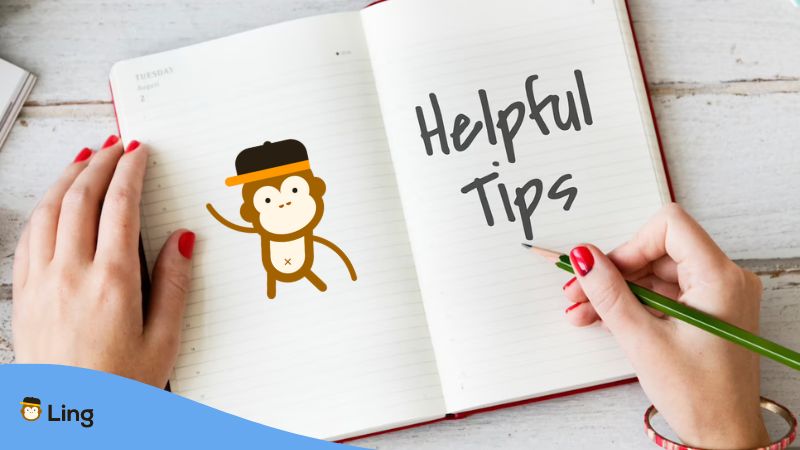Mastering the Korean language is exciting. It’s a gateway into a rich culture. The heart of it? Respect and politeness.
They’re more than social customs. They are language essentials. And in Korean? It’s all about the context.
Let’s say you’re chatting with a Korean friend. The topic? Last weekend’s football match.
You don’t know how to agree and disagree in Korean. What words do you use? “네 (Ne)” for ‘yes’ and “아니요 (Aniyo)” for ‘no’ comes to mind.
But there’s more.
Your choice of words can change. It depends on the situation’s formality. And on your relationship with the listener.
But don’t worry.
This guide is here to help. We’ll take you through each step. By the end, you’ll be chatting with ease.
Are you ready? Let’s dive in.
Basic Korean Phrases For Agreement And Disagreement
When you’re learning Korean, you start with the basics.
That includes words of agreement and disagreement.
They’re like building blocks. They form the foundation of your language journey.
Simple yet powerful, they can turn a phrase into a conversation.
Basics Of Agreement In Korean
Let’s start with agreeing. In Korean, it’s not just about saying “yes.”
The way you express agreement can change.
It depends on the situation and who you’re talking to.
For instance, you can simply say “네 (Ne),” which is the equivalent of ‘yes.’
Then there’s “그래요 (Geuraeyo),” a very neutral phrase. It can mean ‘I agree,’ ‘That’s right,’ or ‘Okay.’
There’s also “맞아요 (Majayo),” a common Korean word and another way to say ‘That’s correct.’
But what if you want to strongly agree?
Then you can use “정말로 (Jeongmallo),” the perfect Korean phrase that means ‘Really’ or ‘Truly.’
And finally, “동의합니다 (Dong-uihamnida)” is a more formal way to say ‘I agree.’
Basics Of Disagreement In Korean
Now, let’s talk about disagreeing. This is just as important as agreeing in any language.
In Korean, the basic word for ‘no’ is “아니요 (Aniyo).”
But often, you might need to express more than a simple ‘no.’
For example, “그렇지 않아요 (Geureochi anhayo)” can mean ‘That’s not right.’
And if you need to disagree respectfully, you might say “동의하지 않아요 (Dong-uihaji anhayo),” which translates to ‘I disagree.’
If you want to express strong disagreement, “전혀 (Jeonhyeo)” can be used. It means ‘Not at all.’
Lastly, you can say “반대합니다 (Bandae-hamnida)” in more formal situations, meaning ‘I oppose.’
These are your essential tools.
Learn them well. They can transform your conversational skills.
And remember, context is vital.
So, choose your phrases wisely. Your next step? Dive deeper into more complex expressions.
We’re just getting started.

Advanced Korean Phrases For Agreement And Disagreement
All right. Let’s move further. It’s time to level up your Korean language skills with advanced Korean phrases.
These aren’t just your basic phrase ‘yes’ and ‘no’ translations. They express multiple nuances, context-driven expressions.
They can elevate your fluency. They reflect the richness of the Korean language.
Advanced Phrases To Show Agreement
Let’s kick off with agreement. Here are five advanced phrases for your toolkit:
“매우 동의해요 (Maeu dong-uihaeyo)” – This translates to ‘I very much agree.’ Use it when you want to strongly align with someone’s opinion.
“전적으로 동의합니다 (Jeonjeogeuro dong-uihamnida)” – A formal expression meaning ‘I totally agree.’ It’s perfect for professional situations.
“완전히 가치 있어요 (Wanjeonhi gachi iss-eoyo)” – It means ‘It’s totally worth it.’ It can be used when you’re agreeing about the value of something.
“당신의 말이 매우 통한다 (Dangsin-ui mal-i maeu tonghanda)” – Literally translates to ‘Your words resonate deeply.’ A poetic way to agree in Korean.
“당신의 견해를 완전히 이해할 수 있어요 (Dangsin-ui gyeonhaeleul wanjeonhi ihaehal su iss-eoyo)” – It means ‘I can completely understand your viewpoint.’ It’s a thoughtful way to agree with someone’s perspective.
Advanced Phrases To Show Disagreement
Next, let’s go to disagreement. The art of respectful disagreement is essential.
It’s part of Korean culture. Here are five phrases that can help:
“일부분에는 동의하지 않아요 (Ilbubun-eneun dong-uihaji anhayo)” – This means ‘I disagree with part of it.’ Only smart people appreciate how this can be used to respectfully disagree.
“그 말에는 조금 의문이 있어요 (Geu mal-eneun jogeum uimun-i iss-eoyo)” – It translates to ‘I have some doubts about that.’ A softer way to express disagreement.
“다르게 생각해요 (Daleuge saeng-gaghaeyo)” – This means ‘I think differently.’ It’s a tactful way to disagree without being confrontational.
“그렇게 보이지 않아요 (Geuleohge boiji anhayo)” – A more literal translation of ‘It doesn’t seem that way to me.’ A polite expression of disagreement.
“우리는 그 문제에 대해 다르게 봐야 할 것 같아요 (Ulineun geu munje-e daehae daleuge bwaya hal geos gat-ayo)” – This translates to ‘I think we need to look at that issue differently.’ It’s a respectful way to disagree on a matter.
Learning these phrases isn’t just about expanding your vocabulary.
It’s about understanding the language’s rhythm.
It’s about growing into a more fluent speaker.
Remember, each phrase has its place. Use them well.
Differences In Formality Levels
In Korean, formality isn’t just about politeness. It’s fairly loose and often about showing respect.
It’s about acknowledging someone’s social status or age.
And this extends to how you agree and disagree in Korean.
For instance, consider the phrase “네 (Ne).” It’s an informal way to agree. You use it with friends.
But if you’re talking to a senior colleague, you might say “그렇습니다 (Geureosseumnida).”
It’s a more respectful way to agree. It signifies your respect towards them.
Now, let’s consider disagreement.
The common word “아니야 (Aniya)” is informal.
It’s like saying ‘no’ among friends.
But when expressing disagreement to someone of higher status, you could say “아니라고 생각합니다 (Anirago saeng-gakhapnida).”
It translates to ‘I think not.’ It’s formal and polite.

Non-Verbal Communication In Expressing Agreement And Disagreement
Let’s now shift our focus to non-verbal cues.
The magic of communication isn’t just about words. Your face talks. Your body talks.
Even your voice tone talks.
This is true worldwide, but in Korea, it carries its own unique flavor.
Impact Of Tone
Tone can give weight to your words in Korean.
It can reflect your emotions and your intent.
A low, steady tone when you say “동의해요 (Dong-uihaeyo)” conveys strong agreement.
An upbeat tone suggests enthusiasm.
But what about disagreement?
A lowered pitch and slower pace can show respect.
For instance, you might say “아니요 (Aniyo)” in a calm tone.
It suggests a thoughtful ‘no.’
An abrupt, firm tone, on the other hand, signifies a more robust disagreement.
Impact Of Facial Expressions
Facial expressions play a critical role. They’re like a window to your emotions.
For example, a smile while agreeing shows genuine agreement. It enhances the warmth of your “네 (Ne).”
But disagreement need not be stern.
A polite smile can ease the impact of a “아니요 (Aniyo).” It can help maintain harmony.
Furrowed brows, on the other hand, can show concern or disagreement.
They signal that you’re not just saying ‘no.’ You’re feeling it too.
Impact Of Body Language
Body language is another potent tool in communication.
A nod while saying “그렇습니다 (Geureosseumnida)” can make your agreement more evident.
It’s like you’re agreeing with your whole being.
Disagreement can also be non-verbal.
A slight shake of the head while saying “아니라고 생각해요 (Anirago saenggakhaeyo)” strengthens your dissent.
Crossed arms could show a defensive disagreement.
Open palms can convey your willingness to discuss further.
Each aspect—tone, face, and body—adds a layer of meaning to your words the same way as in any language.
They make your Korean communication richer and deeper.
Remember, the final word isn’t just about what you say.
It’s also about how you say it.
So, as you learn Korean, pay attention to these subtleties.
They’re your path to sounding natural, smart, and more fluent.

Tips To Be More Fluent When Agreeing And Disagreeing In Korean
Now that we’ve covered the essentials, let’s discuss how you can become more fluent.
After all, the final word is practice. Without it, the most perfect phrases are of little use.
Strategies For Regular Practice
First, incorporate regular practice into your routine.
You could dedicate a few minutes each day to learning new phrases.
Make flashcards.
Use language learning apps.
Join a language exchange group.
Challenge yourself to use your new phrases as much as you can.
Remember, practice doesn’t “always” make perfect.
Only perfect practice makes perfect.
How To Learn From K-Dramas, Music, And Conversations With Native Speakers
Korean media is not just entertaining.
It’s rich with real-life language usage.
Listen to the way characters agree or disagree.
Do they nod?
Do they smile?
How do they say “그래요 (Geuraeyo)” or “아니에요 (Anieyo)”?
Watching Korean dramas or listening to Korean music gives you exposure.
Exposure to phrases.
Exposure to pronunciation.
Exposure to the cultural context.
It’s like learning Korean in 3D.
You’re not just learning words. You’re learning how to use them.
You’re learning the emotions behind them. That’s what real Korean conversations are about.
Also, engaging with native speakers gives you firsthand experience.
It’s your chance to practice your skills and learn the nuances.
So, embrace it.
Language is a bridge. It’s a bridge between you and the Korean people.
So, build that bridge. Learn Korean. Your language journey has just begun!
Learn How To Agree And Disagree In Korean With Ling!
You’ve got the basics and more about how to agree and disagree in Korean. It’s a start, but there’s more to learn and explore.
Now, let me introduce the Ling app.
It’s a portal to over 60 global languages, including Korean, immersing you in authentic, enriching experiences.
The Ling app has fun games and real-life situations for practice.
You learn at your own speed, whenever you want.
With Ling, you’re part of a global community.
Find it on Google Play and App Store, download it, and step up your Korean language game today.
With Ling, language learning is natural, enjoyable, and entirely on your terms.
Start your Ling journey now!



































































